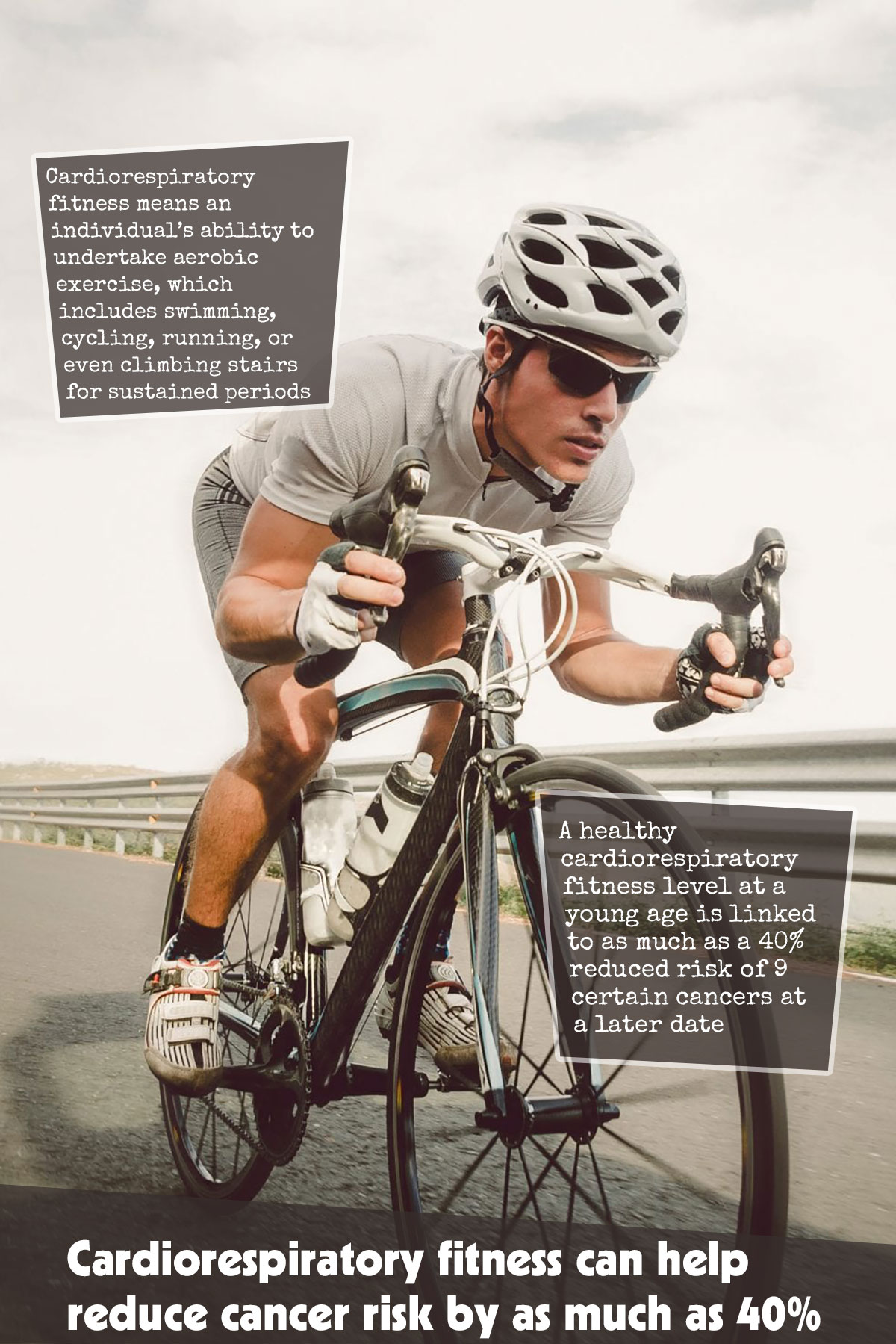According to a large study, a healthy cardiorespiratory fitness level at a young age is linked to as much as a 40% reduced risk of 9 certain cancers at a later date, which includes cancers of the lung, bowel, head and neck, kidney, liver, pancreas, stomach, and esophagus.
Cardiorespiratory fitness (CRF) means an individual’s ability to undertake aerobic exercise, which includes swimming, cycling, running, or even climbing stairs for sustained periods. It’s considered to be linked to a reduction in the risk of specific cancers, but not many long-term studies of multiple types of cancer have been documented.
The researchers used related data from the Swedish registry that covered medical diagnoses, background information, and deaths from participants up to the end of 2019.
At the beginning of the study, when the participants were between the ages of 16 and 25, they underwent a standard array of measurements. These included CRF, muscular strength, blood pressure, BMI, and height.
Participants with a low CRF level were more likely to have a substance and alcohol abuse history, and a little likely to be obese compared to participants with a higher level of CRF.
In all, 365,874 participants, all male, had low CRF levels; 519,652 had moderate CRF levels; and 340,952 had high CRF levels.
The final analysis involved over a million men, 7% of whom then developed cancer in a minimum of 1 site throughout 33 years of monitoring on average.
In comparison to men having a low fitness level at the beginning of the study, higher CRF was linearly linked to a reduced risk of developing certain kinds of cancer.
It was linked to a 5% reduction in rectal cancer risk; a 12% reduction in pancreatic cancer risk; an 18% reduction in bowel cancer risk; a 19% reduction in head and neck cancer risk; a 20% reduction in kidney cancer risk; a 21% reduction in stomach cancer risk; a 39% reduction in esophageal cancer risk; a 40% reduction in liver cancer risk; and a 42% reduction in lung cancer risk.
However, higher CRF was also linked to a 7% increase in prostate cancer risk and a 31% increase in skin cancer risk. The researchers suggest that screening for prostate cancer and sunlight exposure might be the reason for these results.
Because this was an observational study, no definite conclusions can be made regarding cause and effect, and complete data on other lifestyle risk factors that might have influenced the results was unavailable, which include smoking, alcohol intake, and diet.
The researchers were also unable to monitor any CRF changes over time or collect any genetic data on participants.
